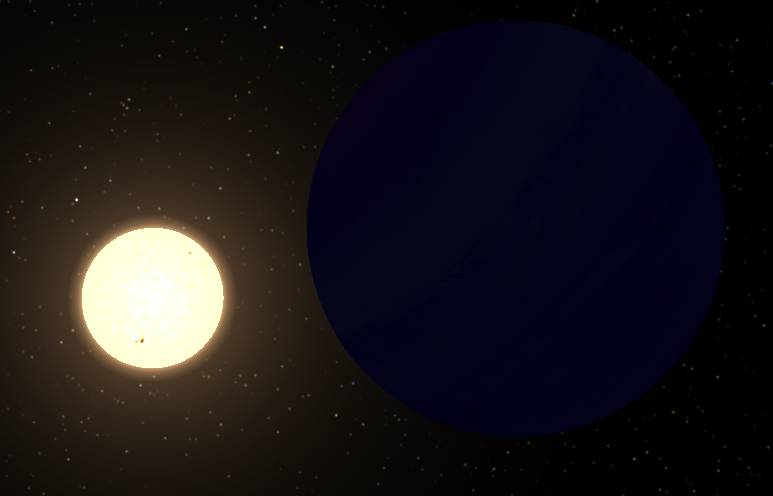The Aquarius Constellation is situated in the southern hemisphere, between Capricornus and Pisces. In Latin, its name means “the water-bearer” (or “cup-bearer”). Aquarius lies in the region of the sky which is sometimes referred to as the Sea, because it contains a number of other constellations with names associated with water — Pisces (the fish), Eridanus (the river) and Cetus (the whale).
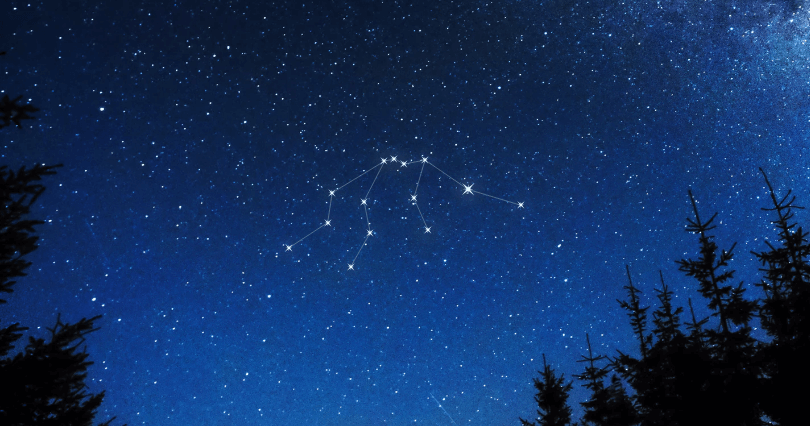
Its brightest star is the famous supergiant star Sadalsuud, and it also contains three Messier objects and other deep sky objects such as nebulae and galaxies. There are four meteor showers associated with the constellation: the March Aquariids, Eta Aquariids, Delta Aquariids and Iota Aquariids.
The constellation contains 11 named stars. The star names approved by the International Astronomical Union (IAU) are Albali, Ancha, Bosona, Bunda, Lionrock, Márohu, Sadachbia, Sadalmelik, Sadalsuud, Situla, and Skat. Currently, around 12 stars in Aquarius have been discovered to host planets.
History and Mythology Of The Aquarius Constellation
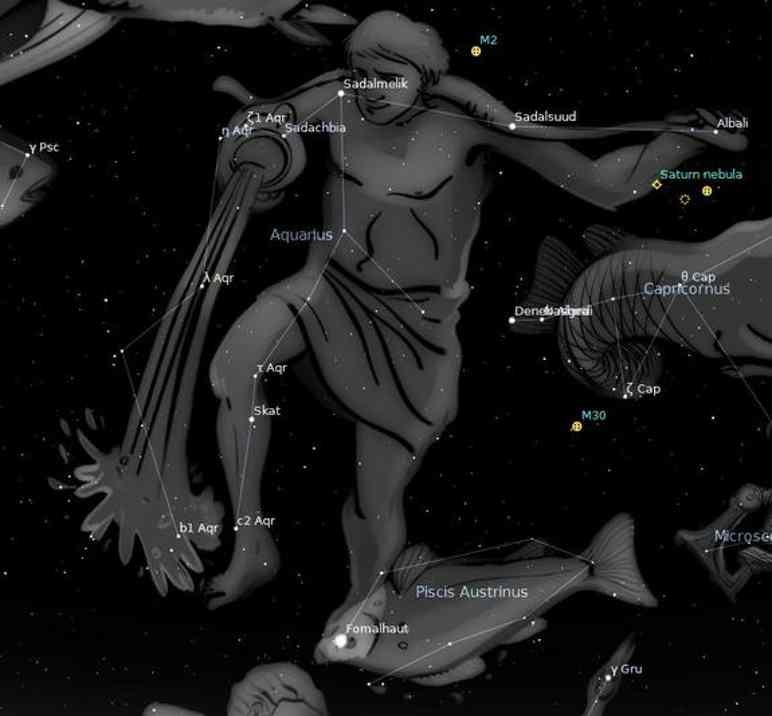
Like other zodiac constellations, Aquarius was first catalogued by the Greek astronomer Ptolemy in the 2nd century.
One of the earliest records of the Aquarius constellation is in the Babylonian star catalogs, where Aquarius was identified as the GU.LA – “The Great One”. It represents the god Ea, who is commonly depicted holding an overflowing water vase. In Babylonian mythology, Ea was the ruler of the southernmost quarter of the Sun’s path.
In Greek mythology, the constellation is linked with Ganymede, who was brought to Mount Olympus to serve as cupbearer to the gods and was thus granted eternal youth in exchange. Also, in another myth, the constellation represents Deucalion, son of Prometheus, who survived the great flood along with his wife Pyrrha.
Location Of The Aquarius Constellation

As we mentioned above, the constellation of Aquarius is the 10th largest constellation in the sky. It stretches for over 980 square degrees, however, it can be difficult to spot because it has few bright stars. Aquarius can be seen in the spring in the Southern Hemisphere and the fall in the Northern Hemisphere.
Its right ascension is 22.71 hours and its declination is -10.19 degrees. It is visible between 65 degrees and -90 degrees and is best viewed during the month of October at 9pm. As of 2002, the Sun appears in the constellation Aquarius from 16 February to 11 March.
Aquarius belongs to the Zodiac family of constellations, along with Aries, Taurus, Gemini, Cancer, Leo, Virgo, Libra, Scorpius, Sagittarius, Capricornus and Pisces. The neighboring constellations are Aquila, Capricornus, Cetus, Delphinus, Equuleus, Pegasus, Pisces, Piscis Austrinus and Sculptor.
Messier Objects
There are three Messier objects in the constellation Aquarius — the globular clusters Messier 2 and Messier 72, and the open cluster Messier 73.

Messier 2
Messier 2, also known as NGC 7089 or M2, is a globular cluster that was discovered in 1746 by astronomer Jean-Dominique Maraldi. It is located at five degrees north of the star Beta Aquarii, which is the brightest star in Aquarius, and is around 55,000 light-years away from Earth.
Messier 2 is one of the largest known globular clusters, with a diameter of 175 light years and a radius of 87.3 light years. It is also 13 billion years old, making it one of the older globular clusters associated with the Milky Way.
The cluster contains around 150,000 stars, including 21 known variable stars. The brightest stars are red and yellow giants, with the overall spectral type being F4. The Messier 2 cluster has a magnitude of +6.3, and under good conditions it can be seen with the naked eye.
Messier 72
Messier 72, also known as NGC 6981 or M72, is a globular cluster with an apparent magnitude of 9.35. It was first discovered by French astronomer Pierre Mechain.
Messier 72 is around 168,000 times more massive than our Sun and is located at around 54.57 light years away from us. It is roughly 9.5 billion years old.
In the core of NGC 6981, there are a density of stars that are radiating 2.26 times the luminosity of the Sun per cubic parsec. There are 43 currently known variable stars in this cluster.
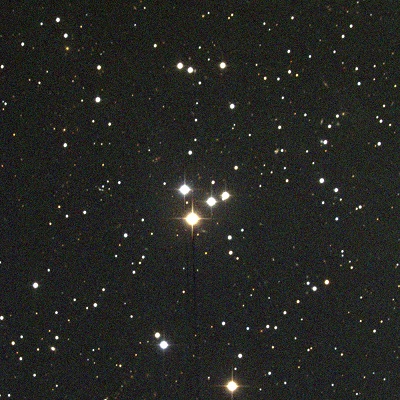
Messier 73
Messier 73, also known as NGC 6994 or M73, is an asterism of four stars that appear close to each other in the night sky, but are actually not really connected. The Messier 73 asterism was discovered by Charles Messier in 1780.
It is located 1.5 degrees east of Messier 72 and is around 2,500 light years away from Earth. It has an apparent magnitude of 2.8, being visible to the naked eye under the right conditions.
Notable Stars
While the Aquarius constellation is large, it doesn’t actually contain any particularly bright stars. Its four brightest stars have a magnitude less than 2. Take a look below at the most notable stars in the constellation.
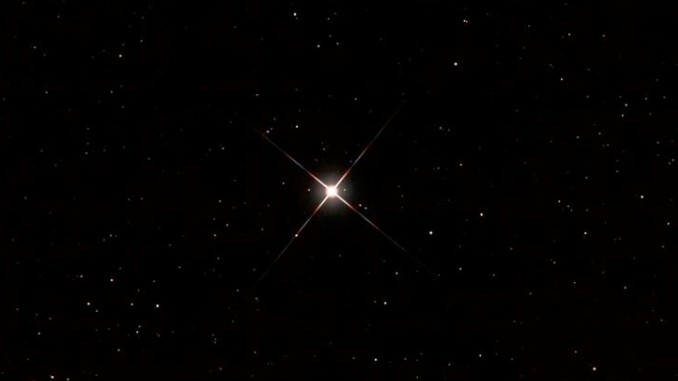
Sadalsuud
Sadalsuud, also known as Beta Aquarii, is the brightest star in Aquarius. It is a yellow supergiant with an apparent magnitude of 2.87. It is located around 540 light years away from us.
Beta Aquarii is a triple or multiple star with a mass that is six times that of the Sun. It is also 2,200 times more luminous than the Sun. The primary component of Beta Aquarii, Beta Aquarii A, has two optical components. One has a magnitude of 11.0 and lies 35.4 arc seconds away, and the other has a magnitude of 11.6 and is 57.2 arc seconds away.
The name Sadalsuud comes from the Arabic phrase sa’d al-suud, meaning the “luck of lucks”.
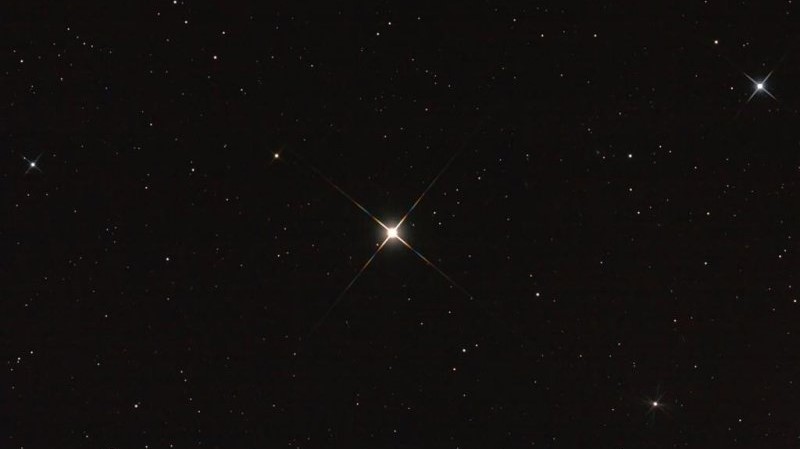
Sadalmelik
Sadalmelik, also known as Alpha Aquarii, is a G-type yellow supergiant that is located approximately 800 light years away from us. It has an apparent magnitude of 2.950 and is 3000 times more luminous than the Sun.
The name Sadalmelik is derived from the Arabic phrase sa’d al-malik, which means “luck of the king”.
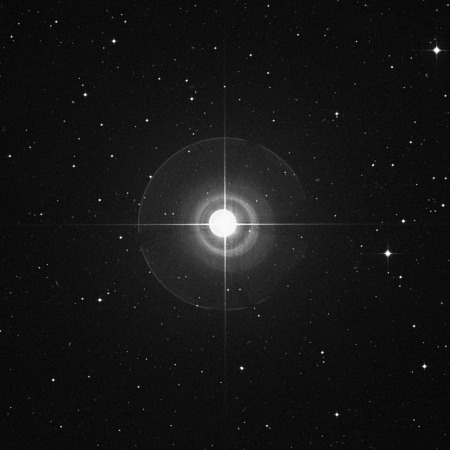
Skat
Skat, also known as Delta Aquarii, is the third brightest star in Aquarius and is believed to be a member of the Ursa Major Moving Group (Collinder 285). This an association of stars that includes the most prominent stars of Ursa Major, which share common velocities and origin.
Skat has an apparent magnitude of 3.269 and is approximately 160 light years away from us. Its name is derived from the Arabic as-saq, which means leg or shin.
Delta Aquarii is associated with a meteor shower, the Delta Aquariids. It is visible from mid-July to mid-August and has an average meteor observation rate of 15-20 per hour.
Sadachbia
Sadachbia, also known as Gamma Aquarii, is a spectroscopic binary star with a period of 58.1 days. It has an apparent magnitude of 3.84 and is located around 158 light years away from us.
The name Sadachbia is derived from the Arabic phrase sa’d al-axbiyah, which means “luck of the homes”.
Sadaltager
Sadaltager, also known as Zeta Aquarii, is a binary star that is located at the center of the water jar asterism. It has an apparent magnitude of 4.42 and is located 103 light years away from us.
Zeta-2 Aquarii is the brighter component with a visual magnitude of 4.42. It is a yellow-white F-type main sequence dwarf, while the companion, Zeta-1 Aquarii, is a yellow-white F-type subgiant. Zeta-1 Aquarii has a visual magnitude of 4.59, meaning that the stars are almost equally as bright.
R Aquarii
R Aquarii is a binary star believed to consist of a white dwarf and a Mira-type variable red giant. The white dwarf’s gravitational pull draws in material from the red giant and sometimes ejects the surplus, which forms a nebula around the system. The nebula is known as Cederblad 211.
R Aquarii has an apparent magnitude of 7.69 and is approximately 600 light years away from us.
Other Stars
91 Aquarii
91 Aquarii, also known as Psi-1 Aquarii, is the brightest component in a triple star system. It is located about 148 light years away from us. The primary star is an orange giant with an apparent magnitude of 4.22 that has a confirmed extrasolar planet in its orbit. The companion is another binary star, composed of two magnitude 10 stars.
91 Aquarii b or HD 219449 b is the planet orbiting the primary. It orbits the star at the average distance of 48.5 Gm.
Gliese 849
Gliese 849 is a red dwarf that is located 29 light years away from us. The star has a Jupiter-like planet, Gliese 849 b, that was discovered in August 2006. It is orbiting it at a distance of 2.35 AU.
Gliese 876
Gliese 876 is also a red dwarf, however it is located only 15 light years away. It has a magnitude of 10.1 and is therefore very faint and can’t be seen with the naked eye.
In 2010, it was confirmed that Gliese 876 has four extrasolar planets in its orbit. The closest planet to the star is believed to be either a small Neptune-like planet or a large terrestrial one, while the middle planets are similar to Jupiter and the outer planet is close to Uranus in terms of mass.
88 Aquari
88 Aquari is an orange K-type giant with an apparent magnitude of 3.68. It is located around 243 light years away from us.
Lambda Aquarii
Lambda Aquarii is an M-type red giant that is located around 392 light years away from us. It is an irregular variable star with a mean apparent magnitude of 3.73. It has the traditional names Hydor and Ekkhysis, which mean water and outpouring in ancient Greek.
Epsilon Aquarii
Epsilon Aquarii is a white subgiant and a suspected variable star with an apparent magnitude of 3.8. It is located around 215 light years away from us. It has traditional names Albali (“the swallower” in Arabic) and Nir Saad Bula (“the brightest luck of the swallower”).
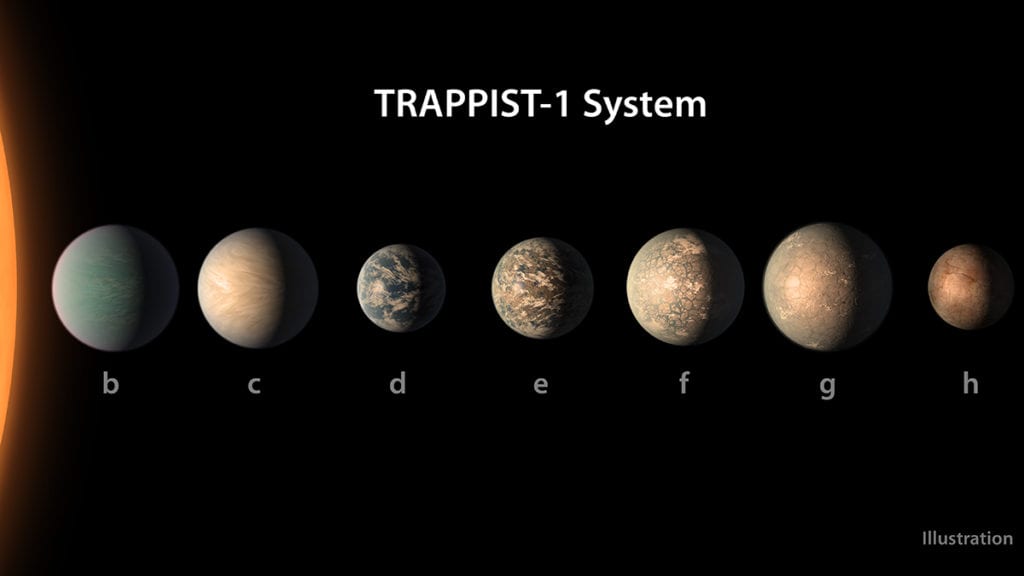
TRAPPIST-1
TRAPPIST-1 is an ultracool dwarf star with a radius slightly larger than the planet Jupiter, while having 84 times Jupiter’s mass. It is about 40 light years from the Sun in the constellation Aquarius.
In 2017, NASA announced that TRAPPIST-1 has seven Earth-like terrestrial planets. Three of these planets are situated in the system’s habitable zone and may contain water. This is believed to be a significant step toward finding life beyond Earth.
Deep Sky Objects
Alongside from the Messier objects we have mentioned above, there are other Deep Sky Objects that can be found in Aquarius constellation. These are mainly nebulae and galaxies.

Saturn Nebula
Saturn Nebula, also known as NGC 7009 or Caldwell 55, is a planetary nebula that formed when a low-mass star evolved into a bright white dwarf. The central star has a luminosity of about 20 Suns and an apparent magnitude of 11.5. Its temperature is about 55,000 K.
This nebula was discovered by Sir William Herschel in the late 18th century. In larger telescopes, its shape appears similar to that of the planet Saturn.
The nebula’s fluorescent green tint is believed to be created by the wrong ultraviolet radiation emitted from the star.
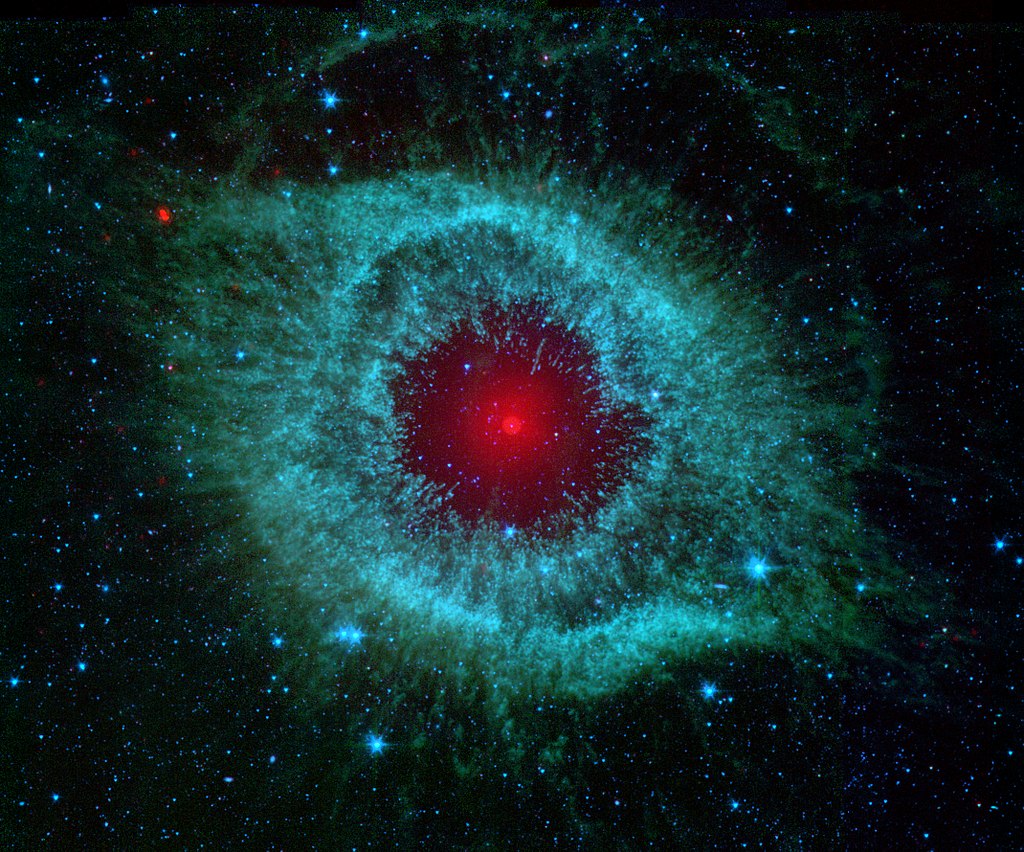
Helix Nebula
Helix Nebula, also known as NGC 7293 or Caldwell 63, is a planetary nebula discovered by Karl Ludwig Harding probably before 1824. It is one of the closest bright planetary nebulae to Earth, located around 650 light years away from us.
It has an apparent magnitude of +7.6 and a radius of around 2.87 light years, similar in appearance to the Cat’s Eye Nebula or the Ring Nebula. Because of its appearance, the nebula has earned the nickname the Eye of God.
The Aquarius Dwarf
The Aquarius Dwarf, also known as PGC 65367 or DDO 210, is an irregular dwarf galaxy and a member of the Local Group of galaxies. It has an apparent magnitude of 14.0 and is located around 3.1 million light years away from us.
It is one of the rare galaxies that display a blueshift, meaning that it is moving toward the Milky Way Galaxy at 137 km/s.
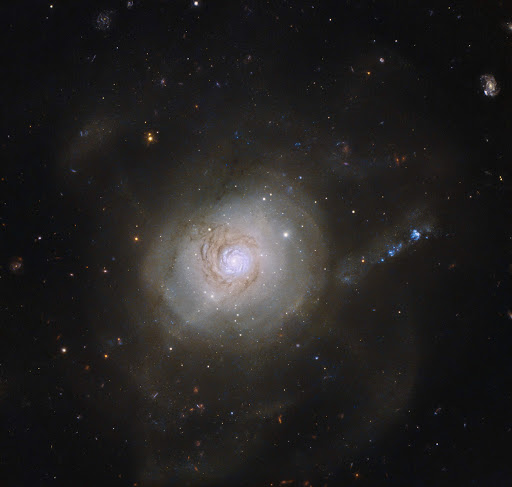
Atoms for Peace Galaxy
Atoms for Peace Galaxy, also known as NGC 7252, is a peculiar elliptical galaxy with an apparent magnitude of 12.7. It is approximately 220 million light years away from us and is believed to be the product of a collision between two disk galaxies roughly a billion years ago.
It got its name from Dwight Eisenhower’s ‘Atoms for Peace’ speech in 1953, as its shape resembles a diagram of an electron orbiting the nucleus of an atom.
NGC 7727
NGC 7727 is a spiral galaxy located at around 76 million light years away from the Milky Way. It has an apparent magnitude of 11.5 and is believed to be the product of two previous spiral galaxies that merged around 1 billion years ago.
It is thought that NGC 7727 will become an elliptical galaxy in the future, with very little interstellar dust and star formation.
Meteor Showers
There are also three meteor showers that appear to come from the direction of the constellation of Aquarius.
Eta Aquariids
Eta Aquariids is the strongest meteor shower in Aquarius, which peaks between 5 and 6 May with a rate of about 35 meteors per hour. Fireballs are common shortly after the peak, between 9 and 11 May.
Delta Aquariids
Delta Aquariids is a double radiant meteor shower. It first peaks on 29 July and secondly on 6 August.
The first radiant is located in the south of the constellation of Aquarius, while the second radiant is located in the northern circlet of the Pisces asterism. The southern radiant’s peak rate is around 20 meteors per hour, and the northern radiant’s peak is about 10 meteors per hour.
Iota Aquariids
Iota Aquariids is a weak meteor shower. It peaks on 6 August and has a rate of approximately 8 meteors per hour.
Extra Facts
- In astrology, Aquarius is the 11th sign in the Zodiac and it represents those born between January 20, and February 18.
- In Ancient Egypt astronomy, Aquarius was associated with the annual flood of the Nile; the banks were said to flood when Aquarius put his jar into the river, beginning spring.
- In Chinese astronomy, the stream of water flowing from the Water Jar was depicted as the “Army of Yu-Lin” (Yu-lin-kiun or Yulinjun).
- The name in the Hindu zodiac for Aquarius is Kumbha – “water pitcher”.
Images:
- Some Images created with the NightVision app – https://www.nvastro.com/nvj.html
- Some Images created with the Stelvision Sky Map https://www.stelvision.com/en/sky-map/
- Aquarius 1 – https://starregistration.net/constellations/aquarius-constellation.html
- Aquarius 2 – https://star-name-registry.com/aquarius
- Messier 2 – https://en.wikipedia.org/wiki/Messier_2
- Messier 73 – https://freestarcharts.com/messier-73
- Sadalsuud – http://www.astronomytrek.com/star-facts-sadalsuud/
- Sadalmelik – https://astrologyking.com/sadalmelik-star/
- Skat – https://in-the-sky.org/data/object.php?id=TYC6387-1382-1
- 91 Aquarii – https://en.wikipedia.org/wiki/91_Aquarii_b
- TRAPPIST-1 – https://www.nasa.gov/feature/jpl/new-clues-to-trappist-1-planet-compositions-atmospheres/
- Saturn Nebula – https://en.wikipedia.org/wiki/Saturn_Nebula
- Atoms For Peace Galaxy – http://www.sci-news.com/astronomy/ngc7252-hubble-atoms-for-peace-galaxy-03491.html
